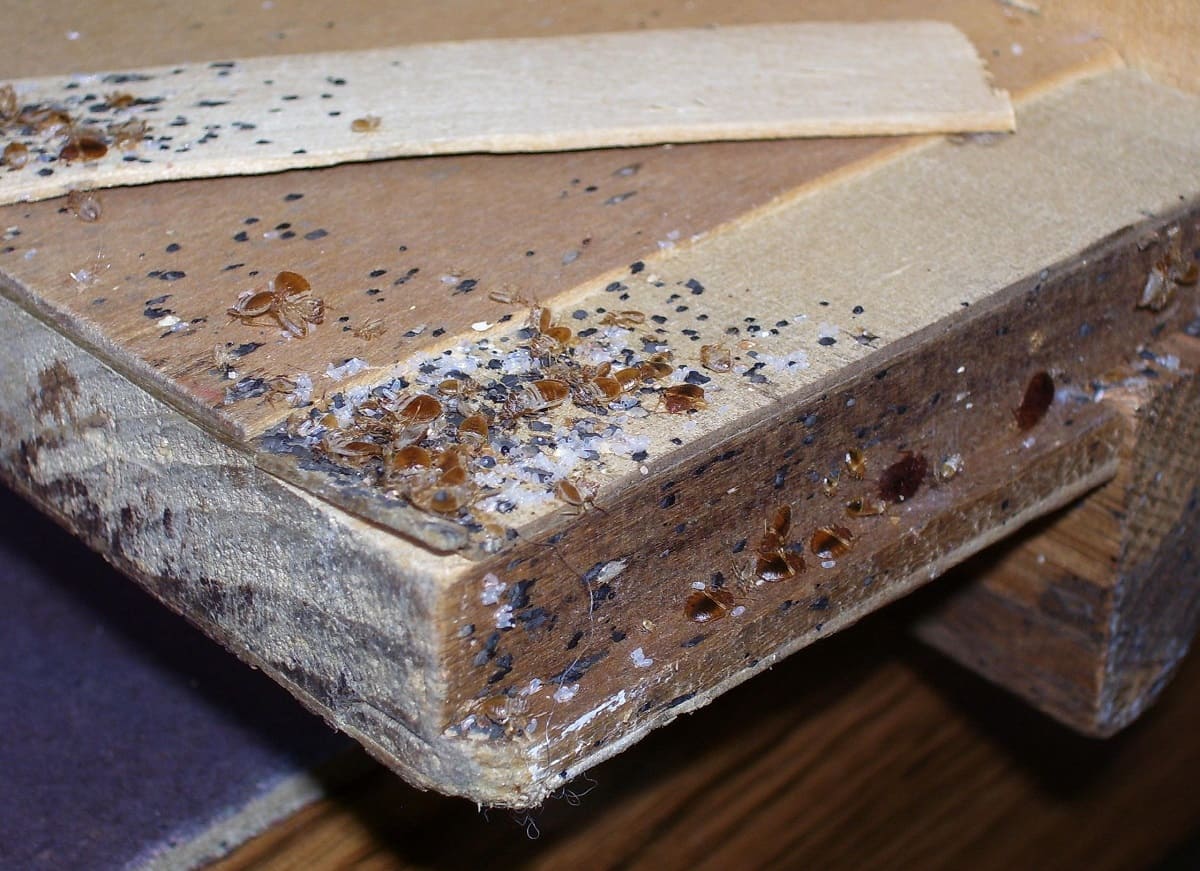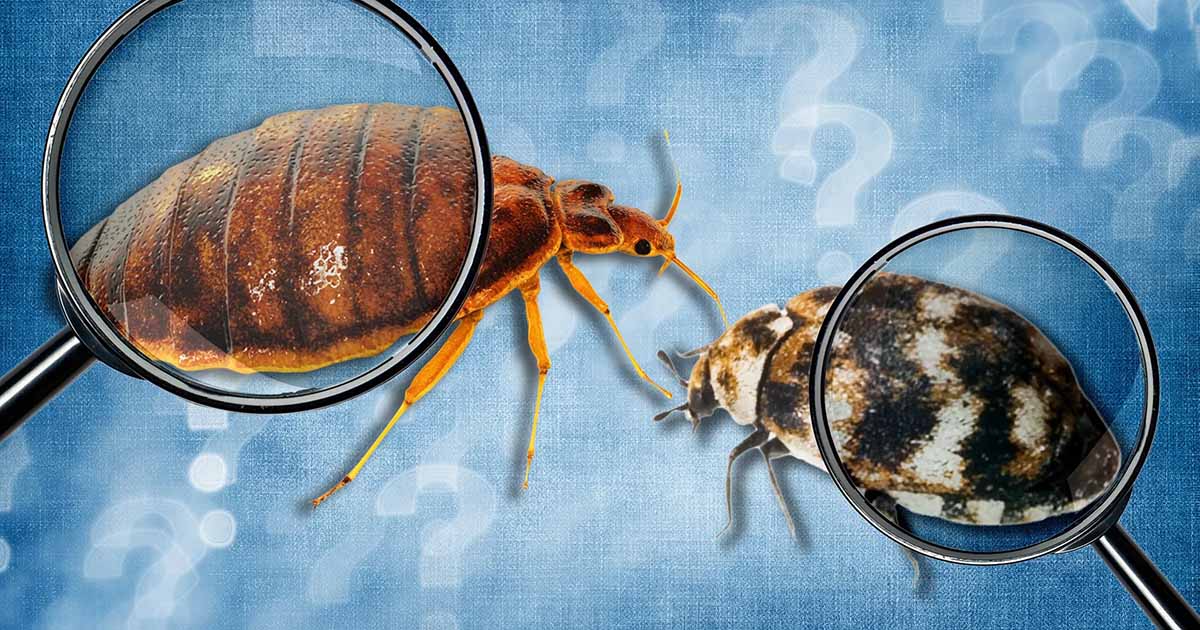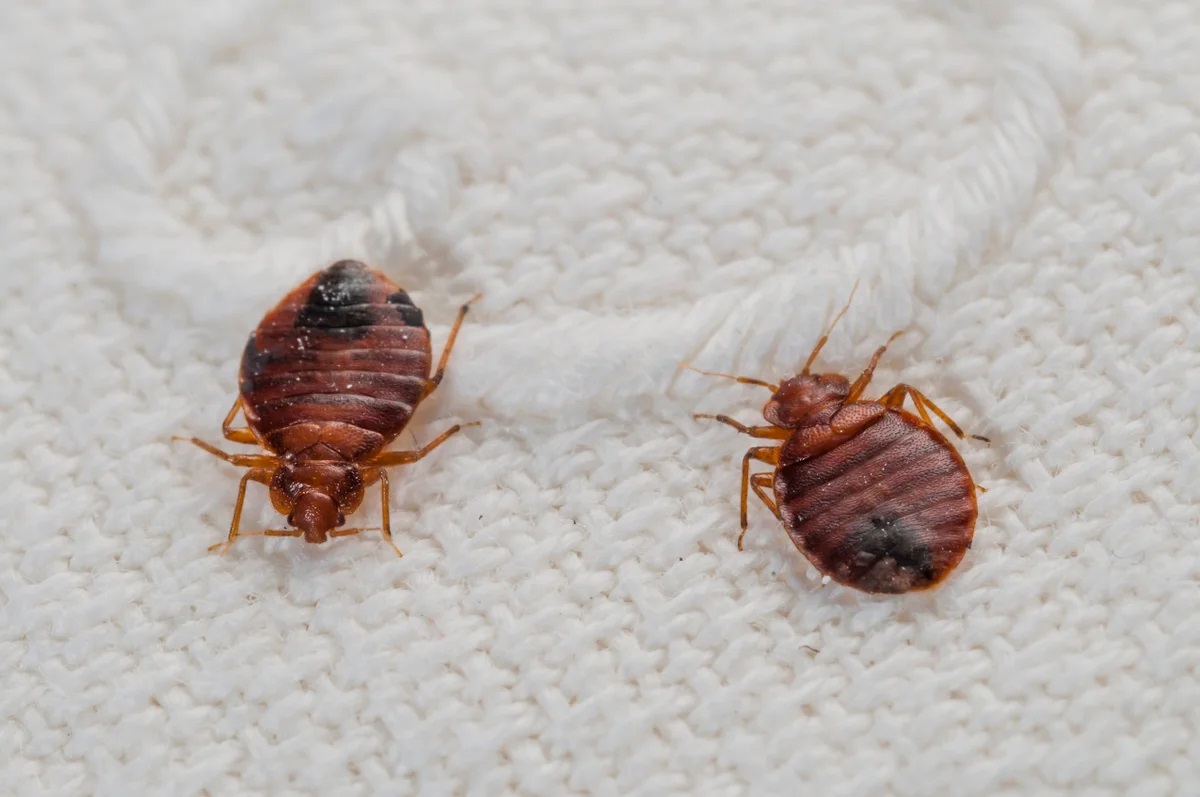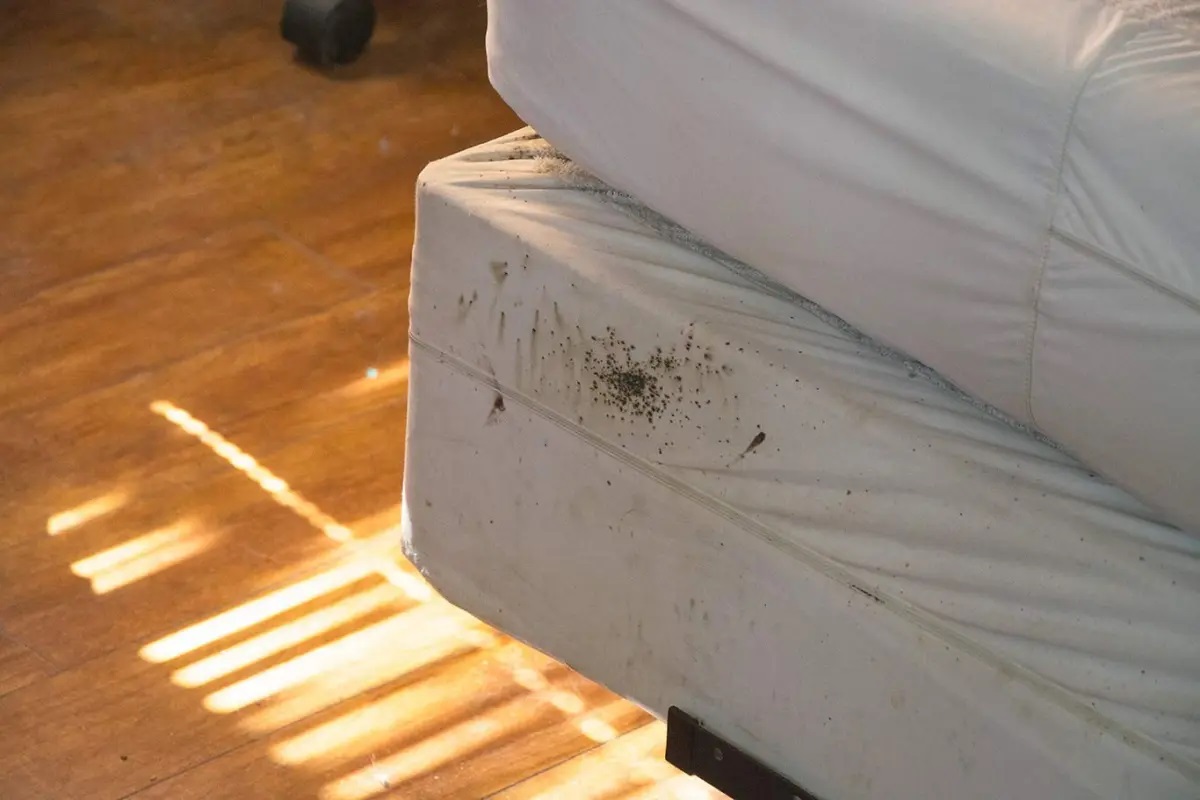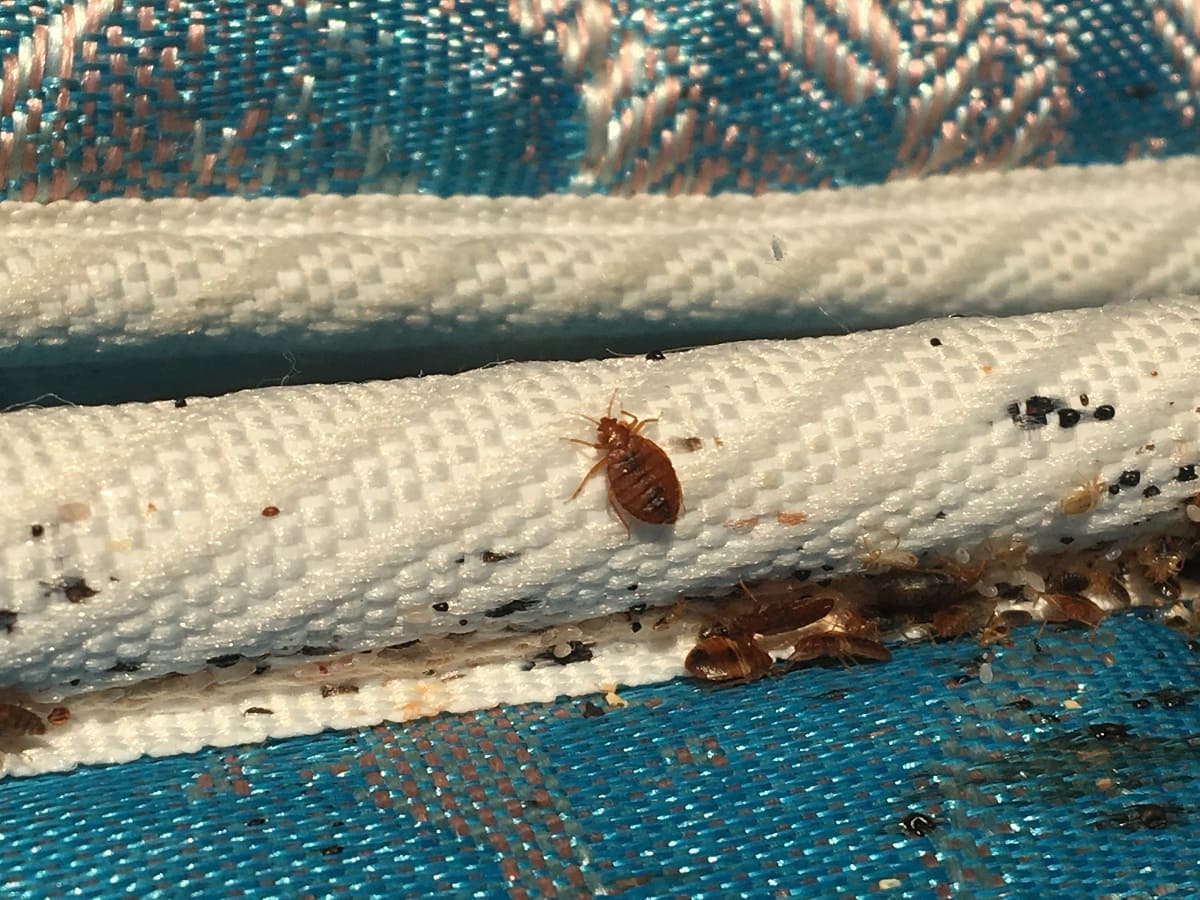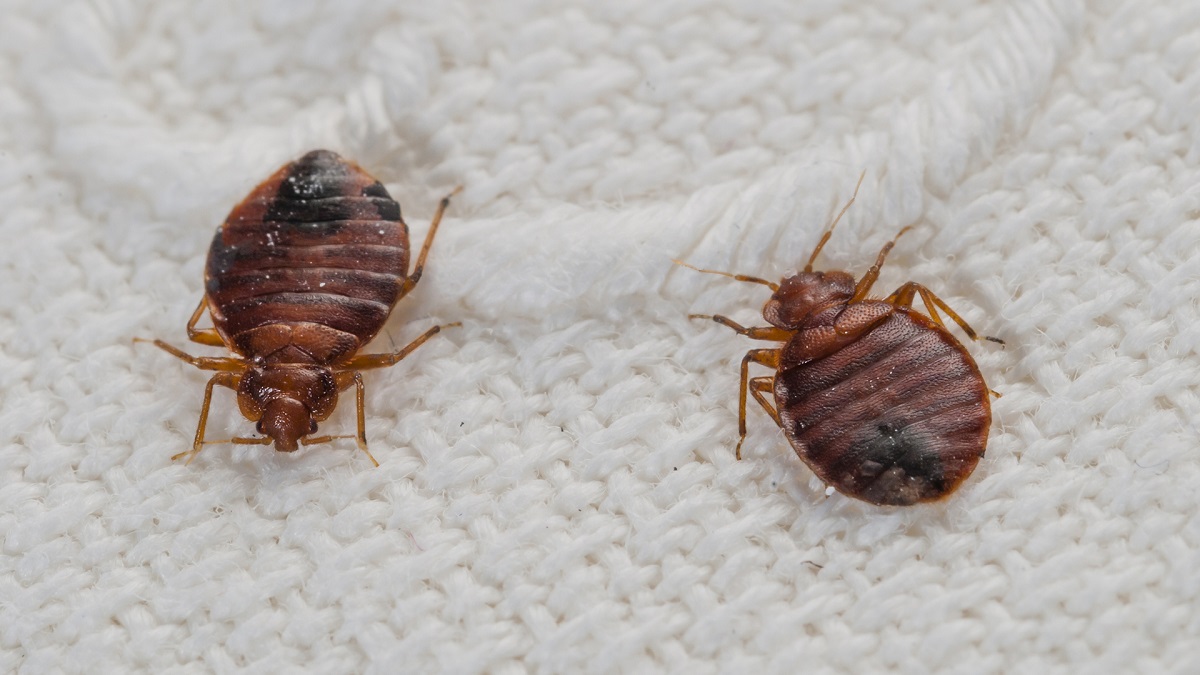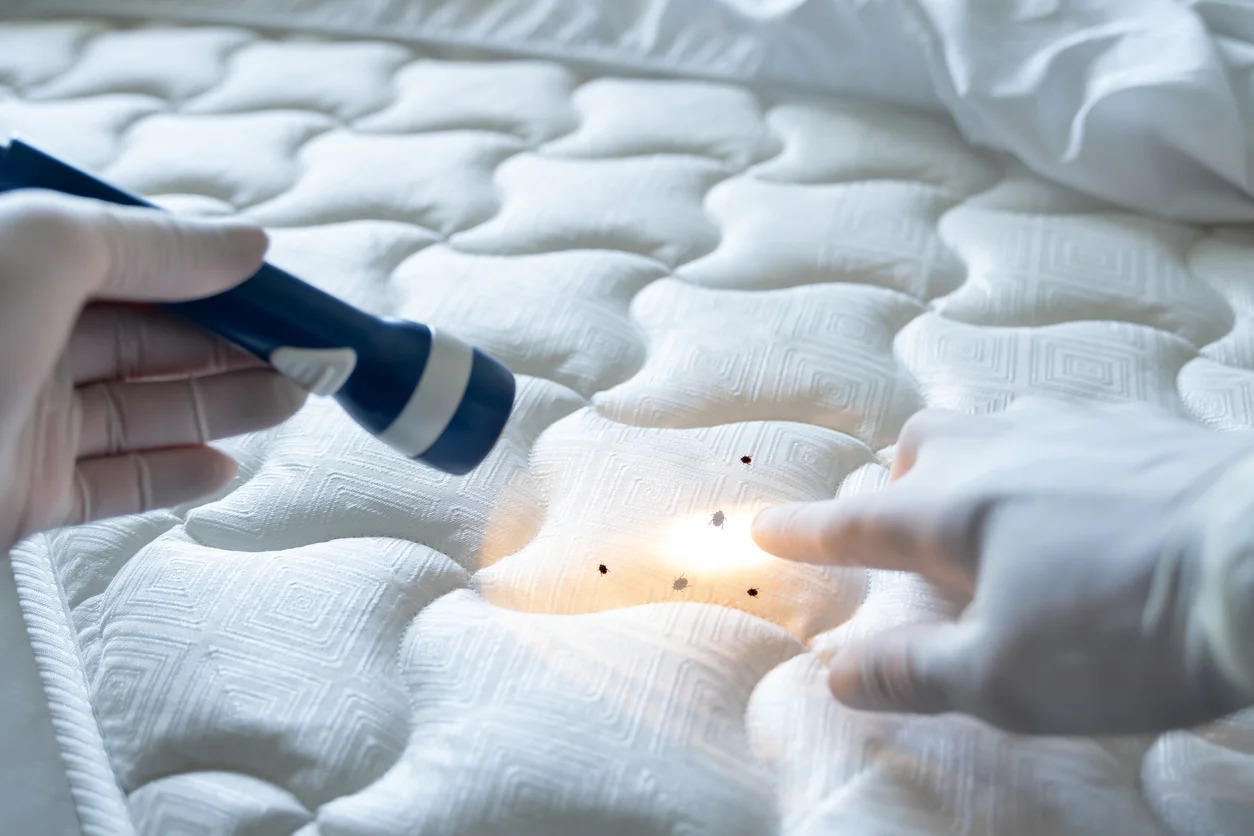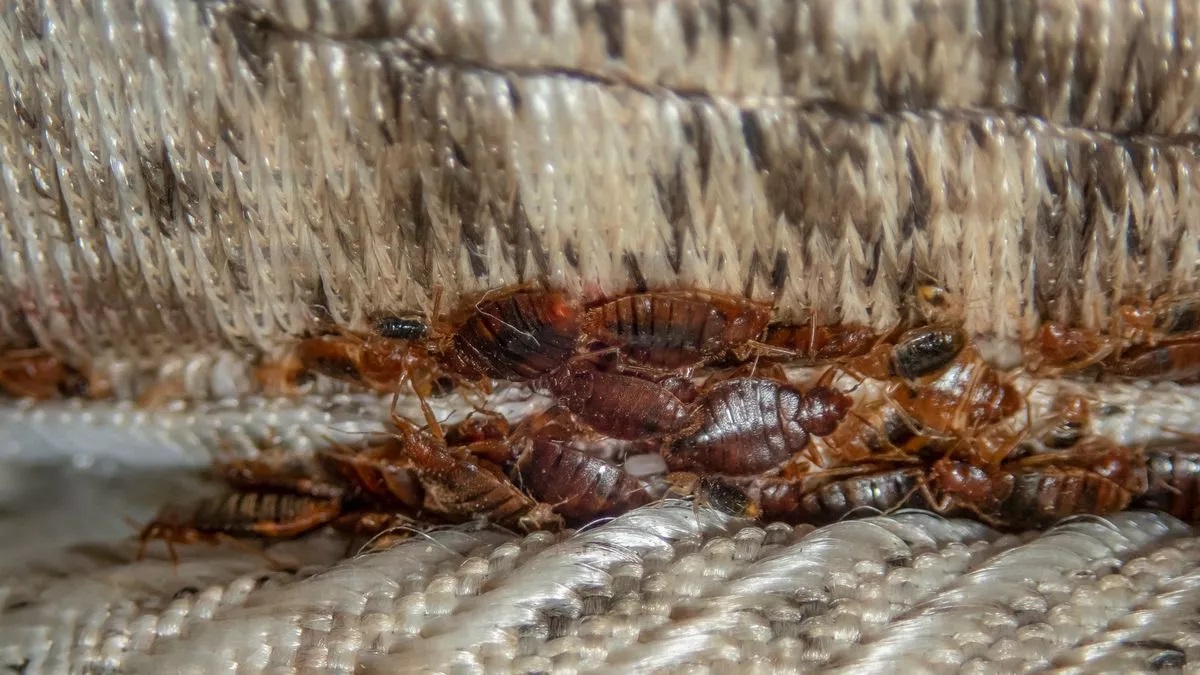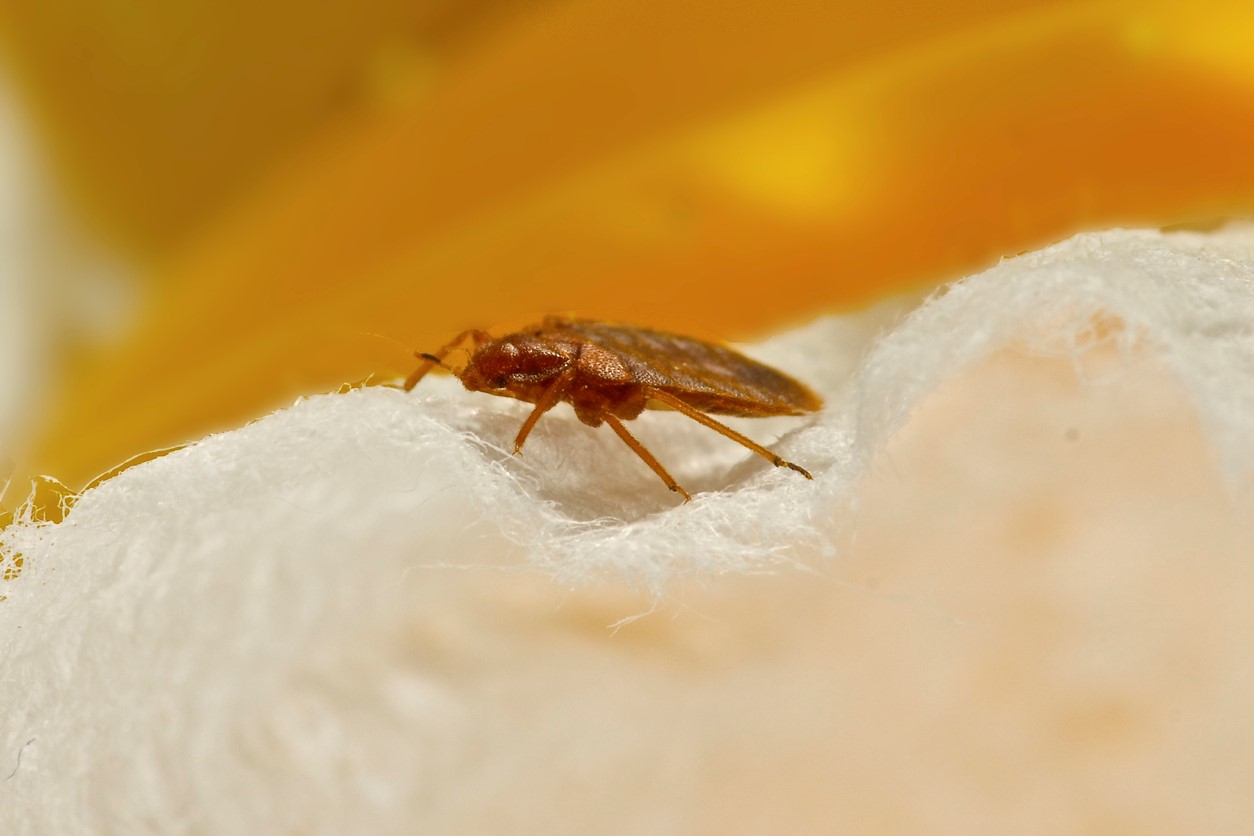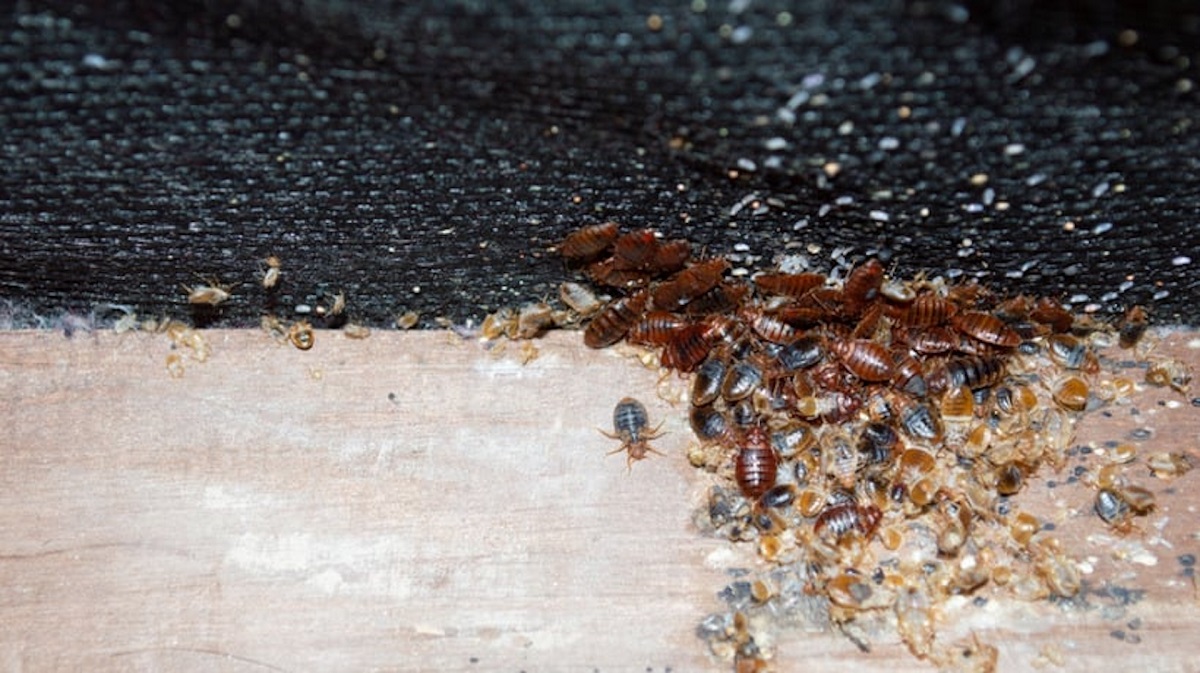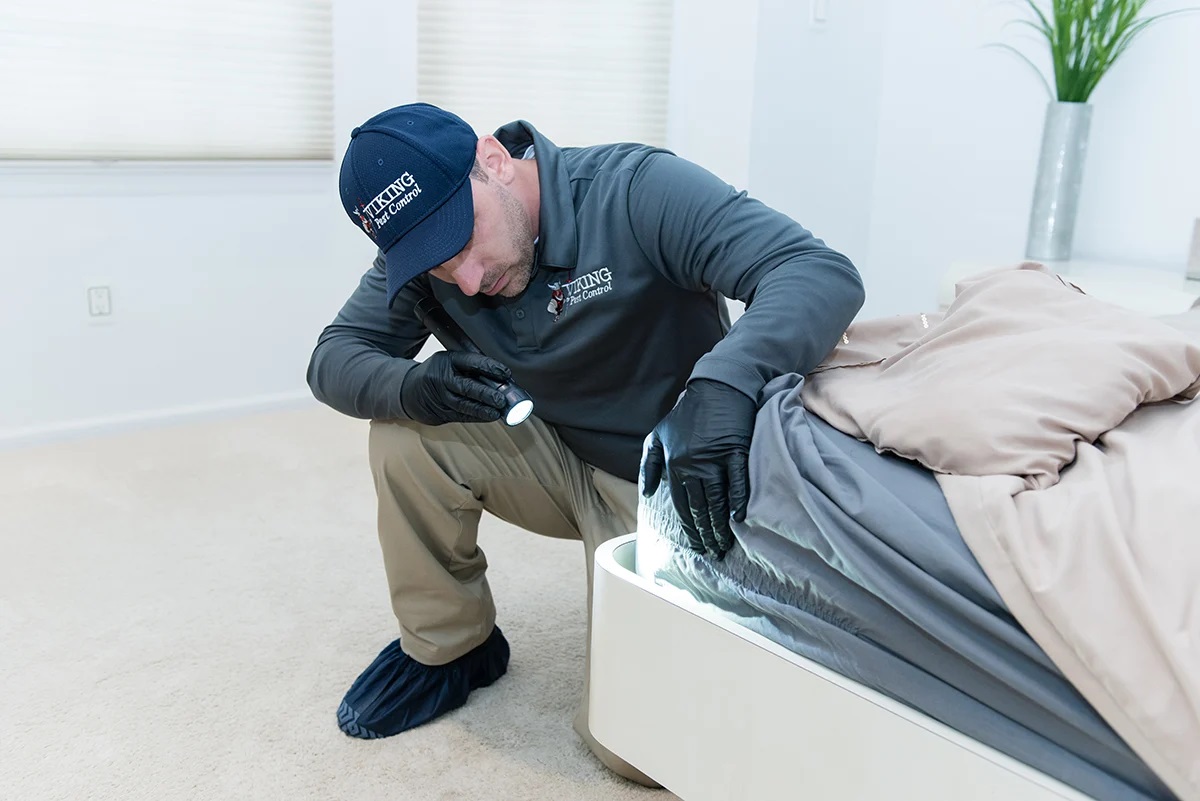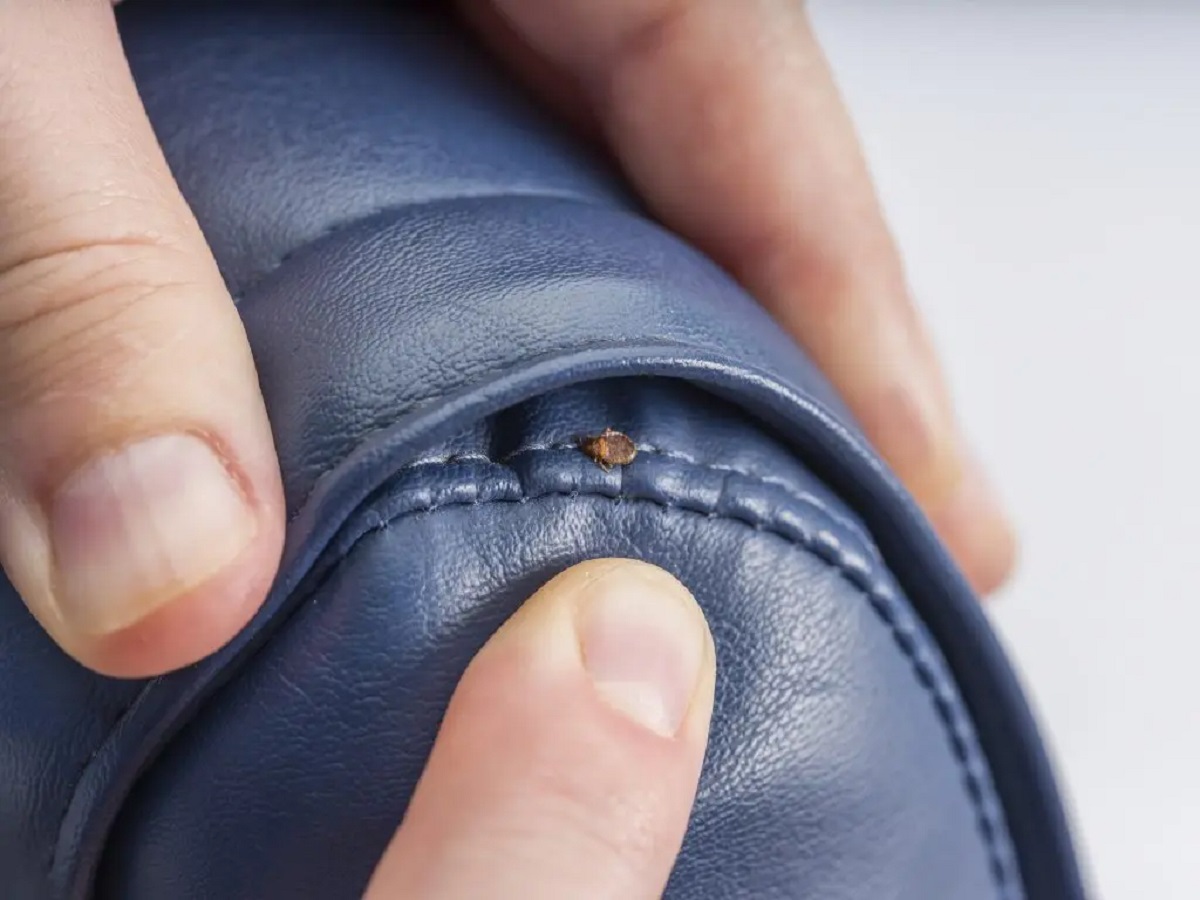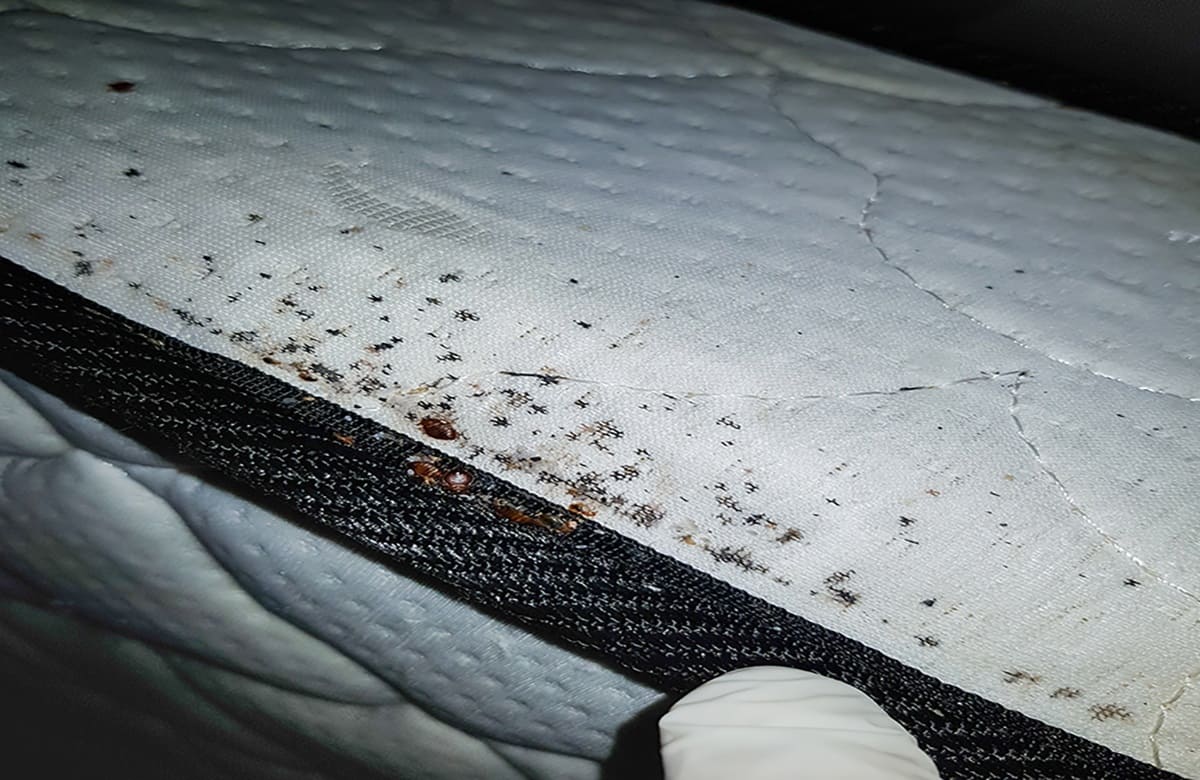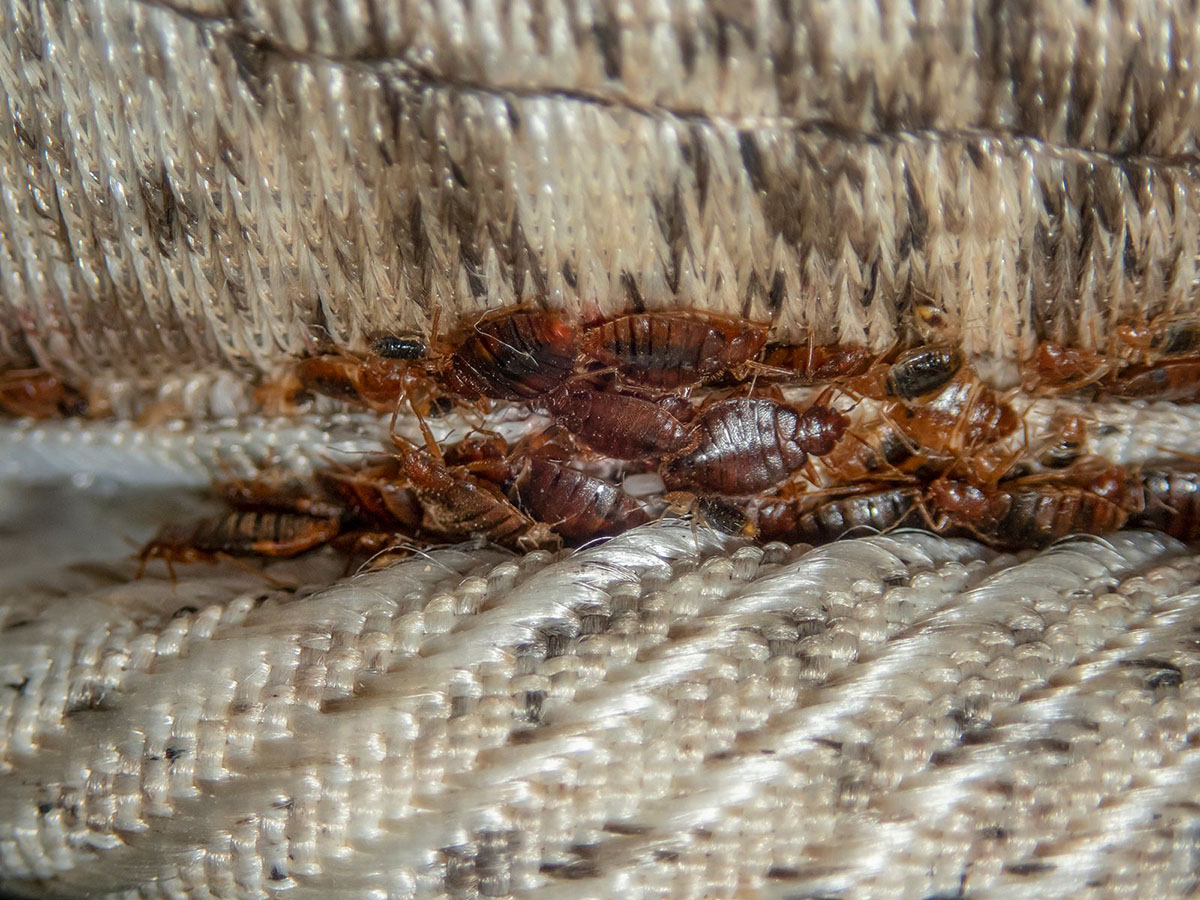

Articles
How To Find Bed Bugs In A Carpet
Modified: May 6, 2024
Learn effective methods to find and eliminate bed bugs hiding in your carpet with our informative articles.
(Many of the links in this article redirect to a specific reviewed product. Your purchase of these products through affiliate links helps to generate commission for Storables.com, at no extra cost. Learn more)
Introduction
Bed bugs can be a nuisance, infesting our homes and causing discomfort and sleepless nights. These tiny pests have an uncanny ability to hide in various places, including carpets. Finding bed bugs in a carpet can be challenging, as they are skilled at blending in with their surroundings. However, with a keen eye and some knowledge, you can uncover their presence and take the necessary measures to eliminate them.
In this article, we will explore the signs that indicate the presence of bed bugs in carpets. We will discuss how to visually inspect for bed bugs and provide tips on using a flashlight to spot these pesky critters. Additionally, we will look at identifying bed bug eggs, fecal stains, live bed bugs, and cast skins. Finally, we will touch on the use of bed bug detection dogs as a reliable method for finding bed bug infestations in carpets.
By understanding the signs of bed bugs in carpets and employing the appropriate techniques, you can effectively detect and address potential infestations before they become a full-blown problem.
Key Takeaways:
- Detecting bed bugs in carpets requires keen observation for signs like bite marks, musty odors, black spots, and shed skins. Using a flashlight and inspecting for tiny, pearl-white eggs can confirm infestation.
- Bed bug detection dogs, with their remarkable sense of smell, provide accurate and non-invasive detection of bed bugs in carpets. Combining their skills with visual inspections ensures thorough assessment and treatment.
Read more: How To Get Bed Bugs Out Of A Carpet
Signs of Bed Bugs in Carpets
Bed bugs are notorious for their ability to hide in small crevices and cracks, making them difficult to detect. However, there are several telltale signs that can indicate their presence in carpets. By recognizing these signs, you can take prompt action to address the problem.
- Bite marks: If you wake up in the morning with itchy, red bite marks on your body, especially in a pattern of multiple bites in a row, it could be a sign of a bed bug infestation. While bed bugs usually prefer to feed on uncovered areas of the body, such as the face, neck, arms, and legs, they can also bite through clothing.
- Musty odor: Bed bugs release pheromones that have a distinct and unpleasant odor described as musty or sweet. If you notice a lingering smell in your home, particularly near the carpeted areas, it could be an indication of a bed bug infestation.
- Black spots or stains: Bed bugs leave behind fecal stains, which appear as small black spots or smears on the surface of the carpet. These stains are often found near the areas where bed bugs hide or feed.
- Shed skins: As bed bugs grow and mature, they shed their exoskeletons or outer shells. Finding these discarded skins around the carpeted areas could indicate an active bed bug population.
It is important to note that while these signs can suggest the presence of bed bugs in carpets, they are not definitive proof. For a more conclusive confirmation, visual inspection of the carpet and its surroundings is required.
Visual Inspection
Performing a thorough visual inspection is one of the primary methods to determine if your carpet is infested with bed bugs. Here are some steps to follow during the inspection process:
- Clear the area: Begin by removing any furniture or objects that may obstruct your view of the carpet. This will provide better access to all areas and make the inspection process easier.
- Look for physical signs: Carefully examine the carpet for any signs of bed bugs. Check along the edges, seams, and corners, as these are common hiding spots. Look for live bed bugs, shed skins, eggs, or fecal stains. Take note of any suspicious findings.
- Pay attention to tiny cracks and crevices: Bed bugs are skilled at hiding in small spaces, so inspect the carpet fibers, tufts, and any gaps or crevices in the floorboards or baseboards. Use a flashlight to illuminate dark areas and focus on these hard-to-see spots.
- Inspect nearby areas: Although your primary focus is on the carpet, don’t forget to inspect other adjacent areas, such as upholstered furniture, mattresses, and curtains. Bed bugs can easily travel between these locations, so it’s essential to thoroughly check them as well.
- Take pictures or notes: As you conduct the visual inspection, document any findings by taking clear photographs or writing detailed notes. This documentation can be helpful if you need to consult a professional pest control expert for further assistance.
- Repeat the inspection: Bed bug infestations can be challenging to detect, and the initial inspection may not reveal all the hidden bugs or eggs. It’s a good idea to repeat the visual inspection periodically, especially if you have noticed any signs of bed bugs or have recently traveled and stayed in a hotel or accommodation where bed bugs are known to be present.
A visual inspection is a crucial step in determining the presence of bed bugs in carpets. If you find evidence of an infestation, it’s recommended to take immediate action to prevent the problem from spreading further and seek professional help if needed.
Using a Flashlight
When conducting a visual inspection for bed bugs in carpets, a flashlight can be a valuable tool to help you spot the tiny pests in dark or hidden areas. Here are some tips on effectively using a flashlight during your inspection:
- Choose a bright flashlight: Opt for a flashlight that provides a bright and focused beam of light. LED flashlights are often the best choice as they produce a strong, clear light.
- Adjust the angle: Hold the flashlight at different angles to illuminate various spots on the carpet. Tilting the beam of light can help reveal hidden bed bugs or their eggs.
- Focus on seams and edges: Bed bugs are known to hide in the seams and edges of carpets. Direct the flashlight along these areas and carefully observe for any signs of bed bug activity.
- Inspect tufts and fibers: Bed bugs can also hide within the tufts and fibers of the carpet. Use the flashlight to closely examine these areas, paying attention to any movement or small dark spots that may indicate the presence of bed bugs.
- Take your time: Conduct a slow and thorough inspection, moving the flashlight across the carpet in a methodical manner. Bed bugs are small and can easily blend in, so it’s essential to take your time and scrutinize every section of the carpet.
- Use a magnifying glass: If necessary, use a magnifying glass to get a closer look at any suspicious spots or areas. This can help you identify bed bug eggs, which are tiny and difficult to see with the naked eye.
Remember to be patient and meticulous when using a flashlight for inspecting carpets for bed bugs. The goal is to uncover any signs of infestation that may not be immediately visible to the naked eye. If you spot any evidence of bed bugs, it is important to take appropriate action promptly to prevent the problem from worsening.
Checking for Bed Bug Eggs
Bed bug eggs are tiny and can be challenging to detect during a visual inspection. However, identifying these eggs is crucial as it indicates an active infestation and helps in the eradication process. Here are some steps to check for bed bug eggs in carpets:
- Focus on hotspots: Start by concentrating your inspection on areas where bed bugs are likely to lay their eggs. These areas include seams, crevices, and cracks in the carpet, as well as along the edges and near the baseboards.
- Look for small, oval-shaped eggs: Bed bug eggs are about the size of a pinhead and are usually pearl white or translucent. They are often laid in clusters and are resistant to being easily wiped away.
- Use a magnifying glass: To enhance your ability to spot bed bug eggs, use a magnifying glass. This will allow you to see the eggs more clearly and differentiate them from other debris or particles on the carpet.
- Inspect dark and tight areas: Bed bugs prefer to lay their eggs in concealed locations, such as between carpet fibers or in the crevices of furniture. Use your flashlight to examine these areas closely, paying attention to any small whitish eggs that may be present.
- Monitor the hatch time: Bed bug eggs typically hatch within one to two weeks. If you find eggs during your inspection, keep an eye on the area to observe if any nymphs or baby bed bugs emerge. This can help confirm an active infestation.
- Seal and dispose of eggs: If you locate bed bug eggs, it is essential to take immediate action. Use tape or a sticky adhesive to trap the eggs and then carefully seal them in a plastic bag. Dispose of the bag in an outdoor bin to prevent the eggs from hatching and spreading further.
Checking for bed bug eggs in carpets requires a keen eye and patience. It may take some practice to differentiate between debris and actual eggs. If you are unsure about any findings, consider reaching out to a professional pest control expert who can provide guidance and assistance in dealing with the infestation.
Use a flashlight and a credit card to inspect the carpet for bed bugs. Look for live bugs, shed skins, and fecal spots. Focus on seams, edges, and underneath furniture.
Read more: How To Trap Bed Bugs
Bed Bug Fecal Stains
One of the telltale signs of a bed bug infestation in carpets is the presence of fecal stains. Bed bug fecal matter appears as small dark spots or smears on the surface of the carpet. These stains are often indicators of their feeding activities and can be an essential clue during an inspection. Here’s what you need to know about bed bug fecal stains:
- Identifying the stains: Bed bug fecal stains look like small dots or streaks and are usually black or dark brown in color. They can resemble ink stains or small droplets.
- Location of the stains: Bed bug fecal stains are commonly found near their hiding spots, feeding areas, or along the seams and edges of the carpet. These stains may also appear on nearby furniture, bedding, or curtains.
- Distinguishing from dirt: It’s important to differentiate between bed bug fecal stains and regular dirt or debris on the carpet. Bed bug stains will smear when wiped with a damp cloth, as they are a combination of digested blood and waste. Dirt, on the other hand, does not smear in the same way.
- Using a damp cloth: To confirm if a stain is bed bug fecal matter, dampen a clean cloth with water and gently rub the stain. If it smears and leaves behind a reddish-brown or rust-like color, it is likely a bed bug fecal stain.
- Professional confirmation: If you are unsure about the presence of bed bug fecal stains, it’s advisable to seek the opinion of a professional pest control expert. They can provide a more accurate and conclusive assessment of the situation.
Bed bug fecal stains are a strong indication of an infestation, and their presence should not be taken lightly. If you discover fecal stains on your carpets, it’s crucial to take immediate action to address the bed bug problem and prevent it from spreading further.
Live Bed Bugs
Spotting live bed bugs in your carpet is a clear sign of an infestation that requires immediate attention. While bed bugs are small and adept at hiding, especially during daylight hours, it is still possible to catch them in action. Here is what you need to know about identifying live bed bugs in carpets:
- Size and appearance: Adult bed bugs are about the size of an apple seed, approximately 4-5 mm in length. They are flat, oval-shaped, and reddish-brown in color. Nymphs, which are younger bed bugs, are smaller and lighter in color.
- Active during the night: Bed bugs are nocturnal creatures and are most active at night when they come out to feed on human blood. They are attracted to the warmth and carbon dioxide emitted by sleeping humans, making the bed a primary feeding ground.
- Checking in dark areas: Live bed bugs are often found hiding in dark and hidden areas of the carpet, such as along seams, underneath the edges, or in folds and crevices. Use a flashlight to inspect these areas and watch for any movement or signs of bed bugs.
- Slow, crawling movement: When not feeding, bed bugs move relatively slowly and may appear sluggish. However, do not underestimate their agility and ability to quickly scatter when disturbed.
- Clustered together: Bed bugs tend to congregate in groups, especially in areas with high human activity. If you spot one live bed bug, there is a possibility of more nearby.
- Using a magnifying glass: Some live bed bugs may be challenging to spot with the naked eye due to their small size and ability to camouflage. Using a magnifying glass can help you get a closer look and identify any hidden bed bugs.
- Professional assistance: If you discover live bed bugs in your carpet, it is highly recommended to seek professional help from a pest control expert. They have the knowledge, experience, and equipment to effectively eliminate the infestation and prevent further spread.
Identifying live bed bugs in your carpet is a clear indication that you are dealing with an active infestation. Addressing the problem promptly is essential to minimize the impact on your home and prevent these pests from spreading to other areas.
Bed Bug Cast Skins
One of the significant signs of a bed bug infestation in carpets is the presence of bed bug cast skins. As bed bugs grow and mature, they shed their exoskeletons or outer shells, leaving behind these cast skins. Recognizing and identifying these shed skins can provide valuable evidence of an active bed bug population in your home. Here’s what you need to know about bed bug cast skins:
- Appearance: Bed bug cast skins resemble the shape and size of a mature bed bug. They are transparent, tan, or brown in color and can be flat or curled.
- Location: You can find bed bug cast skins in various areas of your carpet, particularly near their hiding spots or feeding areas. Check along the edges, seams, and corners of the carpet where bed bugs are known to frequent.
- Multiple skins: A significant infestation is often accompanied by several shed skins scattered around the carpet. The presence of multiple cast skins indicates a growing bed bug population.
- Compare sizes: By comparing the size of the cast skins to a live bed bug, you can roughly estimate the stage of the infestation. Nymphs shed their skins multiple times as they grow, while adult bed bugs shed periodically but less frequently.
- Confirming the shedding: To ensure that what you are finding are indeed bed bug cast skins, verify if they are empty shells without any living bed bug inside. Gently touch the skin – if it crumbles or disintegrates, it is most likely an empty exoskeleton.
- Preserving the cast skins: If you discover bed bug cast skins, it is recommended to collect a sample for professional identification. Place the skin in a sealed plastic bag and consult a pest control expert to confirm the presence of bed bugs and determine the appropriate course of action.
Finding bed bug cast skins in your carpet confirms an active infestation. It is crucial to take immediate action to eradicate the bed bugs and prevent their numbers from increasing. Seeking professional assistance is advisable to ensure effective and thorough treatment.
Using a Bed Bug Detection Dogs
Bed bug detection dogs, specially trained canines, are becoming increasingly popular in detecting bed bug infestations, including those hiding in carpets. These dogs have a remarkable sense of smell, which allows them to sniff out the presence of live bed bugs, their eggs, and even tiny nymphs. Here’s what you need to know about using bed bug detection dogs:
- Highly trained dogs: Bed bug detection dogs undergo extensive training to recognize the unique scent of bed bugs. They are trained to display specific behaviors, such as sitting or pawing, to indicate the presence of bed bugs.
- Accurate and efficient detection: These trained canines have a remarkable ability to detect bed bugs even in hidden or hard-to-reach areas, such as within carpet fibers or behind walls. Their accuracy in pinpointing infested areas helps in targeted treatment.
- Non-invasive process: Utilizing bed bug detection dogs is a non-intrusive method of inspecting carpets. Unlike human inspectors, dogs do not require physical contact or invasive procedures while searching for bed bugs, minimizing any disruption to your home or business.
- Complement visual inspections: Bed bug detection dogs are often used in conjunction with visual inspections. While visual inspections can sometimes miss small or well-concealed infestations, dogs can efficiently locate hidden bed bug populations, ensuring a comprehensive assessment.
- Effective for early detection: Bed bug detection dogs are incredibly effective at identifying bed bug infestations, including in the early stages. Early detection allows for prompt treatment, helping to prevent the infestation from spreading and becoming more severe.
- Professional assistance required: Utilizing bed bug detection dogs requires the expertise of trained handlers. It is essential to hire reputable pest control companies that have experience in working with these dogs to ensure accurate detection and proper assessment of the infestation.
Using bed bug detection dogs can be a valuable tool in identifying and confirming bed bug infestations in carpets. Their keen sense of smell enhances the accuracy and efficiency of inspections, aiding in targeted treatment and eradication. Consider consulting a professional pest control company equipped with bed bug detection dogs for an effective and comprehensive assessment of your situation.
Read more: How To Kill A Bed Bug
Conclusion
Dealing with a bed bug infestation is a challenging and frustrating task, but being able to detect their presence in carpets is crucial for effective treatment. By understanding the signs of bed bugs in carpets and employing the appropriate inspection methods, you can identify and address potential infestations before they become a major problem.
During a visual inspection, keep an eye out for signs such as bite marks, musty odors, black spots or stains, shed skins, and live bed bugs. Using a flashlight can help you spot bed bugs hiding in dark areas, while checking for tiny, pearl-white bed bug eggs can provide a definitive confirmation of infestation.
If you discover bed bug fecal stains or cast skins, it’s important to take immediate action to prevent the infestation from spreading further. Consider using a magnifying glass to get a closer look at small details, and if necessary, seek professional help for confirmation or eradication.
Another effective method of detection is with the assistance of bed bug detection dogs. These highly trained canines are capable of detecting bed bugs with remarkable accuracy, especially in hard-to-reach areas. Combining their detection skills with visual inspections can ensure a thorough assessment and treatment plan.
Remember, effective bed bug detection is the first step towards successful eradication. By promptly identifying the signs of bed bugs in carpets, you can take appropriate measures to eliminate these pests from your home, ensuring a comfortable and peaceful environment for you and your family.
Now that you've learned how to spot bed bugs in carpets, you might be wondering what steps to take next if these pesky insects have made themselves at home. Our detailed guide on bed bugs will walk you through the necessary measures to tackle this issue effectively. And while pests in your home are a nuisance, it's not just bed bugs you need to worry about. Those pesky pantry moths can also cause havoc. Find out how experts deal with these intruders in our pest control article, offering practical tips to reclaim your space.
Frequently Asked Questions about How To Find Bed Bugs In A Carpet
Was this page helpful?
At Storables.com, we guarantee accurate and reliable information. Our content, validated by Expert Board Contributors, is crafted following stringent Editorial Policies. We're committed to providing you with well-researched, expert-backed insights for all your informational needs.
